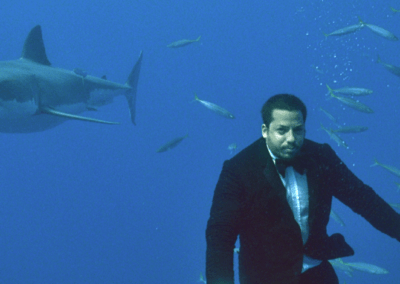In theatrical magic, misdirection is an art of deceit that attracts attention of the audience to a certain object to divert attention from another. Controlling attention of the audience is the aim of all theatre, and is the primary requirement of all magic acts. It doesn’t matter if the magic is a “pocket trick” variety or a large stage production, misdirection is the central secret. The term is used to describe either the result (the eye’s attention being drawn to an unimportant object) or the sleight of hands and patter (the magician’s voice) that creates the illusion.
It is difficult to say who coined the term, but the first reference to misdirection can be found in the writing of a renowned writer and magician named Nevil Maskelyne: Admittedly, it is a method of distracting the senses of the audience in order to screen from being aware of certain information that require secrecy. At the same time, magician, artist and author Tarbell noted, Nearly everything about illusion relies on this art of misdirection.
A few magicians who have researched and developed techniques of misdirection includes Paul Rosini, Max Malini, Derren Brown, Tommy Wonder, Juan Tamariz, Tony Slydini as well as Dai Vernon.
Henry Hay describes the central act of conjuring as a manipulating interest.
Many magicians misdirect audience attention in two basic ways. One leads the audience to look away for a fleeting time, so that they do not notice a act or gesture. Another approach alters the perception of the audience, lulling the audience into believing that some other factor is a significant factor in the performance even though it does not have any bearing on the effect at all. Dariel Fitzkee says that the most effective magic is in the talent he exhibits in influencing the mind of the audience. In addition, sometimes, props like magic wands aids in confusion.

Misdirection is at the heart of most successful magic. Without misdirection, even the a mechanical prop or the most proficient sleight of hand is unlikely to make an impression of true magic.
Misdirection makes use of the limitations of the human mind to create a false picture and memory. The brain of a typical spectator can only focus on only one thing at a given time. The magician makes use of this to influence the perceptions or ideas of the audience of sensory inputwhich leads them to incorrect conclusion.
A few magicians have debated over the usage of the term, misdirection, causing many discussions regarding what it is and how it functions. The exceptional magician Jon Finch identified a difference between direction and misdirection. The first is a negative phraseas opposed to the other, positive. In the end, he sees the two as the same thing. If a performer some means, has directed the mind of the audience to conclude that he did something which he has not done, he has wrongly led them to believe thisand, consequently, misdirection.
Tommy Wonder has pointed out that it’s more effective, from the magician’s point of view, to concentrate on the purpose of directing the attention of the audience. He writes that misdirection suggests the wrong direction. It suggests that attention is diverted away from something. By constantly using this termthe idea eventually becomes it is ingrained into our brains that we might start to think that misdirection is directing attention away from rather than toward something.
Tony Slydini explained that if the magician believes that, the audience will believe it, and magic is something they don’t observe. The trick is to believe what the magician does and then follow the magician. misdirection website
